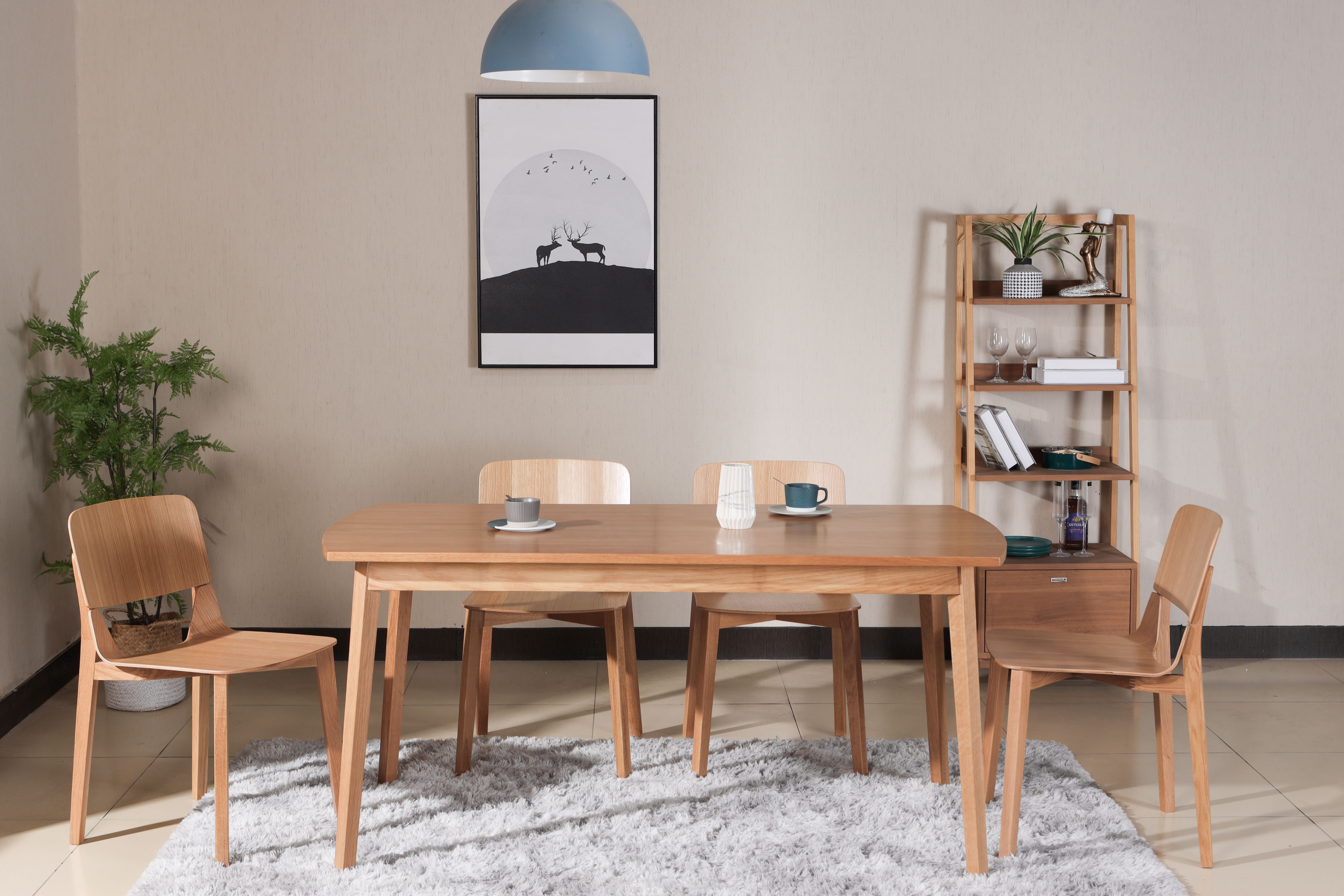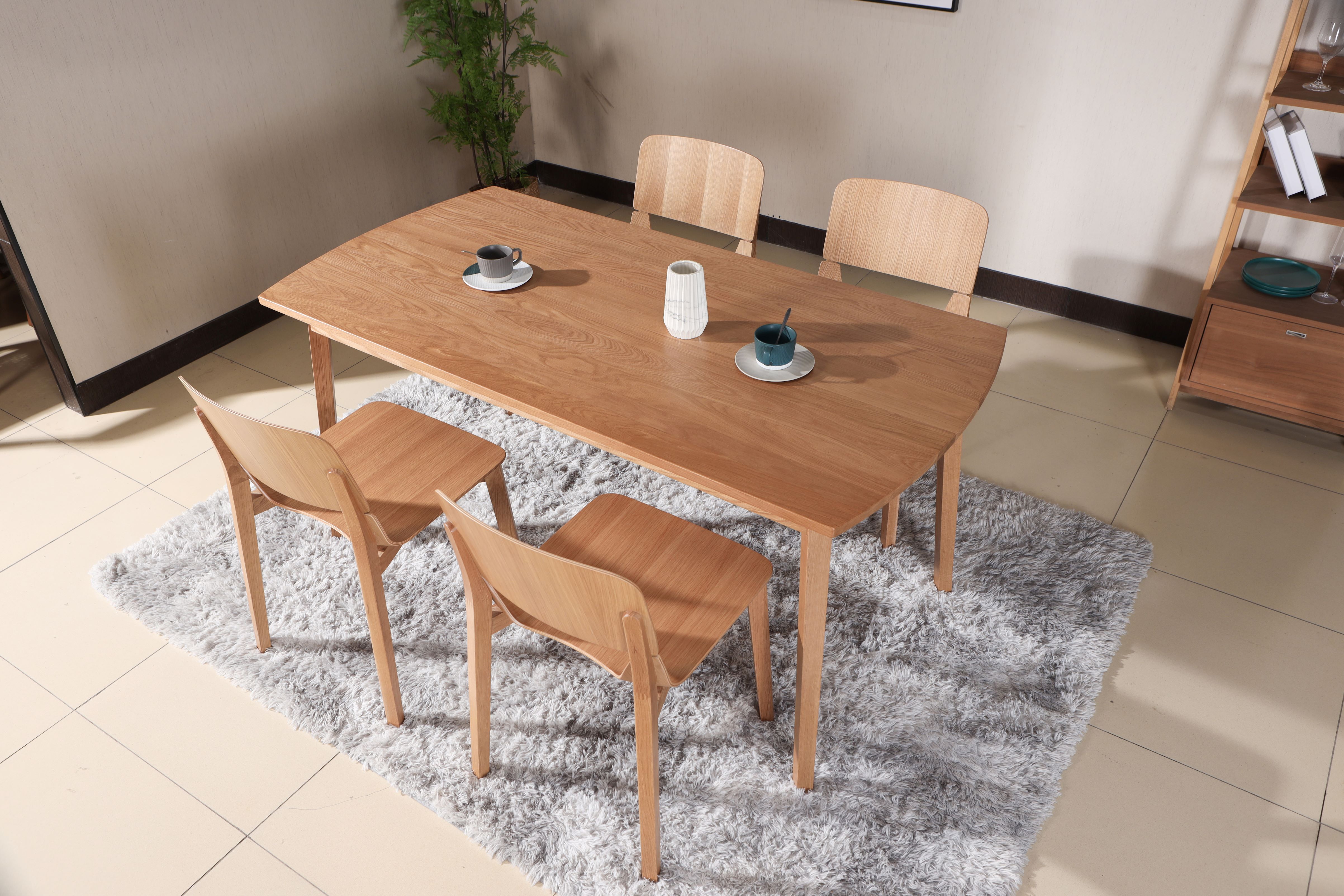- +0086 13256678789
- sigmund.zh@dimeifurniture.com
Resources
Products
NEWS
In modern life, bentwood dining tables are one of our indispensable furniture, playing an essential role. Now there are many types of bentwood dining tables on the market, with different materials and...
Read More >Table and chair are essential furniture for home dining rooms, usually placed in the middle of the dining room. Depending on the size of the space and considering the need to maintain a clear life act...
Read More >When it comes to designing a minimalist workspace, choosing the right furniture is crucial. A minimalist desk not only enhances the aesthetics of your office, but it also creates a calm and clutter-fr...
Read More >Contact Us
Solid wood furniture refers to furniture made of unprocessed and natural materials. And such a piece of furniture will not use any wood-based panels. There are no two same trees and materials, and each product has its unique characteristics. Meanwhile, the quality of wood is also important for the quality of solid wood furniture. So what other factors will affect the quality of solid wood furniture?
Temperature is the main factor affecting the drying rate of wood. With the rise of temperature, the water pressure in wood increases, and the viscosity of liquid free water decreases, which is conducive to promoting the flow and diffusion of water in solid wood furniture. At the same time, the moisture solubility of the drying medium is improved which accelerates the evaporation rate of water on the wood surface. However, it should be noted that if the temperature is too high, it will cause wood cracking and deformation, reduce mechanical strength and discoloration. So it should be properly controlled.
One of the important factors affecting the drying rate of wood is relative humidity. When the temperature and air velocity are the same, the higher the relative humidity is, the greater the partial pressure of water vapor in the medium is, the more difficult the water on the surface of solid wood furniture is to evaporate into the medium, and the slower the drying speed is. When the relative humidity is low, the surface moisture evaporates quickly, the surface moisture content decreases, the moisture content gradient increases, the moisture diffusion expands, and the drying speed is to be fast. However, if the relative humidity is too low, it will cause cracking, honeycomb, and other drying defects, and even aggravate them.

Air circulation speed is another factor influencing wood drying rate. High-speed airflow can destroy the saturated vapor boundary layer on the wood surface, to improve the heat and mass transfer conditions between the medium and wood and speed up the drying speed.
For hard to dry wood or when the moisture content of wood is low, the internal moisture movement of wood determines the drying speed. Increasing the flow rate of a large medium to accelerate the evaporation rate of surface water has no significance. On the contrary, it will increase the moisture content gradient and increase the risk of drying defects. Therefore, this kind of wood does not need a large medium circulation speed.
The above three factors are external factors that can be controlled. If controlled properly, the drying speed can be accelerated on the premise of ensuring the quality of wood drying.
The solid wood furniture of different tree species has different structures. The size and number of its pores and the size of the micropores on the pore membrane are very different. Therefore, the difficulty of water movement along the above paths varies, that is, the wood species is the main internal factor that affects the drying speed. Because ring-hole hard broad-leaved trees (such as rosewood) have more fillings in conduits and pits, and the diameter of the micropores on the pit membrane is small, the drying speed is significantly lower than that of diffuse-porous broad-leaved trees. In the same tree species, the density increases, the water flow resistance in the capillary increases, and the water diffusion path in the cell wall are extended, making it difficult to dry.
The conventional drying process of high quality solid wood furniture can be approximately regarded as a one-dimensional heat and mass transfer process along the thickness direction. With the increase of thickness, the heat and mass transfer distance becomes longer, the resistance increases, and the drying speed decreases significantly.

Below the fiber saturation point, with the decrease of water content, the transverse diffusion coefficient of absorbed water decreases, while the diffusion coefficient of water vapor in the cell cavity increases. Because the diffusion proportion of water vapor in the cell cavity is small during the drying process, the lower the water content, the longer the water diffusion path. Therefore, the lower the water content, the harder it is to dry.
There are more inclusions in the cells of hardwood heartwood, and most of the pits in coniferous heartwood are blocked, so the heartwood is more difficult to dry than sapwood.
Wood ray is conducive to moisture conduction. The moisture conduction along the radial direction of wood is about 15%-20% greater than that along the chord. Therefore, the drying speed of a chord cut board is usually faster than that of a radial cut board. Although the internal causes cannot be controlled, as long as we make good use of drying equipment and technology according to the characteristics of high-quality solid wood furniture, we can also accelerate the drying speed, reduce unnecessary losses and improve the drying effect on the premise of maintaining the wood properties.
Related Furniture Plywood Types
Other Plywood Furniture Hot Topics
